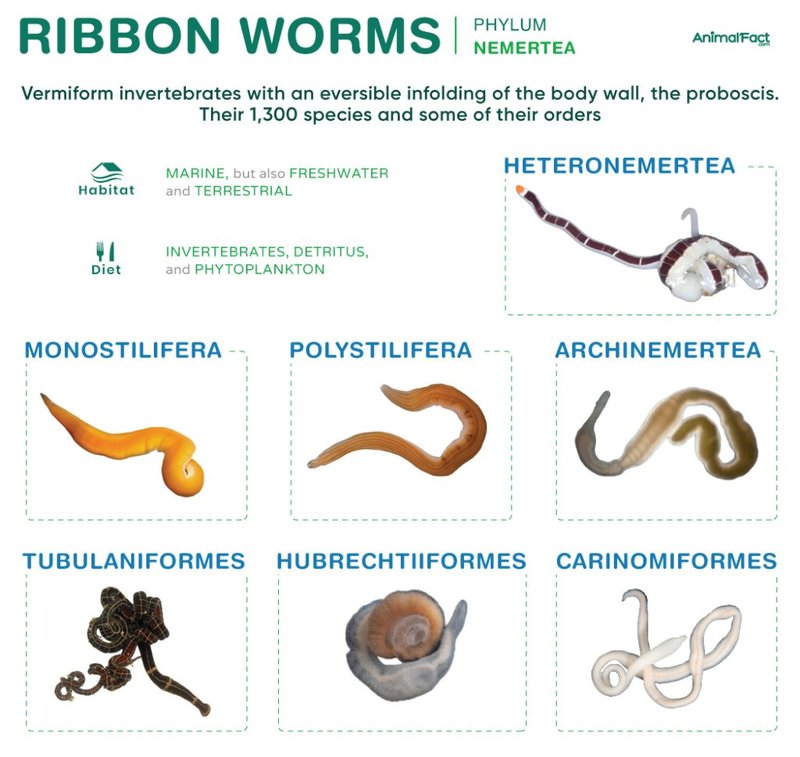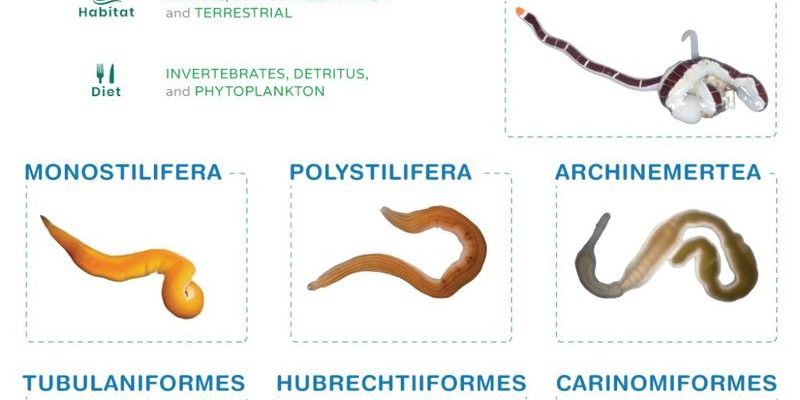
Picture this: If ribbon worms were a box of crayons, each species would represent a different color with its own unique shade. Their colorations are not just for show; they play critical roles in their survival. From camouflage to warning signals, the colors of these worms tell a story about their adaptation to the marine world. So, let’s dive deeper into this intriguing topic and unravel the different shades of ribbon worms.
What Are Ribbon Worms?
Ribbon worms are elongated, soft-bodied creatures that can stretch anywhere from a few centimeters to over thirty meters long! Their bodies are typically flattened and can be brightly colored, which sets them apart from other worm species. They are often found in marine environments, like sandy bottoms or tide pools, where they hunt for prey such as small crustaceans and fish eggs.
These worms have a unique way of capturing prey using a specialized structure called a **proboscis**, which can shoot out quickly to ensnare unsuspecting meals. Honestly, when you see a ribbon worm in action, it’s like witnessing nature’s very own slingshot.
Why Color Matters in Ribbon Worms
You might be wondering, why do ribbon worms have such diverse colors? Their vibrant hues can serve multiple purposes. One of the main reasons is **camouflage**. In the wild, blending in with their environment helps them avoid predators. For instance, a bright green ribbon worm might hide among seaweed, while a sandy-colored one could be found burrowing into the ocean floor.
Another interesting aspect of their coloration is **aposematism**, or warning coloration. Some ribbon worms have bright colors that signal to potential predators that they might be toxic or unpleasant to eat. Think of it like a neon “Do Not Eat” sign. This colorful strategy is crucial for their survival, especially in the diverse ecosystems where they reside.
Color Variations Across Species
Now, let’s explore some of the different color variations found among ribbon worm species. Each variation not only adds to their beauty but also reflects their adaptation to their specific habitats.
- Species A: Often a striking shade of red, these ribbon worms can be found in coral reefs and are known for their vibrant appearance, which signals danger to predators.
- Species B: Usually a muted brown or green, these worms blend seamlessly into the sandy marine floor, helping them avoid predators while they hunt for food.
- Species C: Featuring brilliant yellow patterns, these worms are often found in shallow waters and use their colors to attract mates during the breeding season.
Each of these species illustrates how color plays a vital role in their survival, whether through attracting mates, warding off predators, or blending into their environment.
Color and Habitat Connection
It’s not just random chance that determines the colors of ribbon worms; these hues are deeply connected to their habitats. For instance, ribbon worms living in **tropical waters** tend to be more vibrant. The rich diversity of colors helps them navigate through the complex structures of coral reefs, where vibrant hues are the norm.
In contrast, those in cooler or murkier waters may have duller colors for better camouflage. The idea is that their coloration is a result of natural selection—those that can better adapt to their environments are more likely to survive and reproduce, passing on their traits to future generations.
Effects of Environmental Changes on Color Variations
As our oceans face changes due to pollution and climate change, it’s crucial to consider how these factors affect the color of ribbon worms. Increased water temperature and pollution can lead to shifts in their habitats, potentially affecting their coloration. For example, brighter colors might become less common if food sources dwindle or if pollution damages their coral reef habitats.
Moreover, environmental changes can disrupt **mating** patterns. Brighter colored males might have an advantage in attracting females, leading to a decline in their population if those colors vanish in response to environmental stressors.
Research and Future Studies
Scientists and researchers are continually studying ribbon worms to understand their color variations better. Collaborative efforts with marine biologists aim to uncover how these creatures adapt to their surroundings. Ongoing studies focus on the genetic basis for color production and how it relates to the ecological roles these worms play.
As we continue to explore the wonders of the ocean, understanding the color variations in ribbon worms can shed light on broader ecological issues. It not only highlights the importance of biodiversity but also underscores the need for conservation efforts to protect these incredible creatures and their habitats.
Color variations in ribbon worms are more than just eye-catching details; they’re essential indicators of each species’ survival strategy and ecological role. As we’ve seen, these vibrant colors reflect their adaptation to different environments, help them thrive in diverse habitats, and play critical roles in their life cycles.
As we delve deeper into the marine world’s mysteries, let’s remember that every bright hue and subtle shade tells a story. The study of ribbon worms provides not only a glimpse into their fascinating lives but also a broader understanding of the delicate balance of our ocean ecosystems. Protecting these creatures and their habitats ensures that future generations can continue to marvel at their beauty and complexity.

